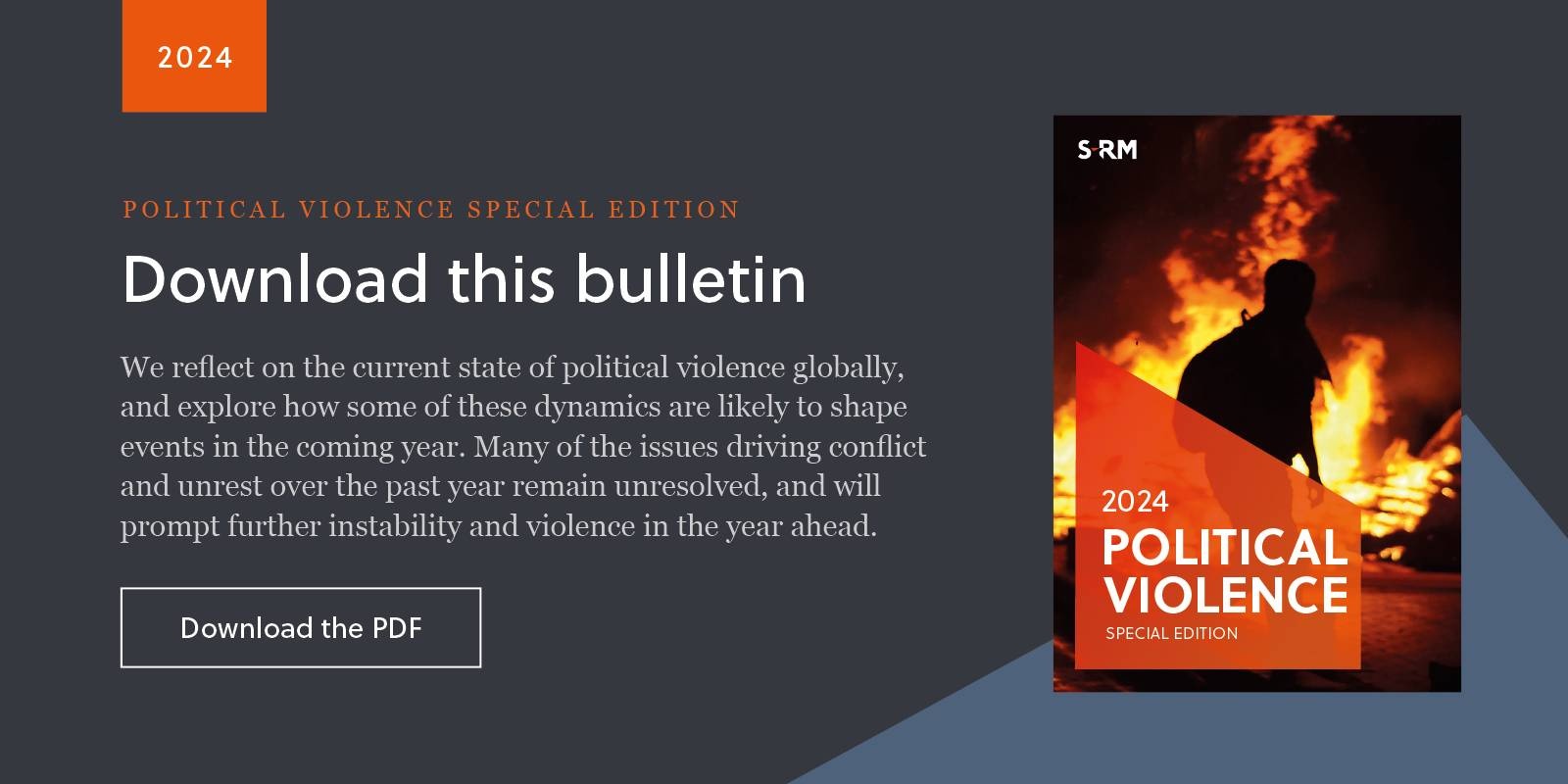Changes in the geopolitical landscape can be sudden and far-reaching. But even rapidly emerging and evolving fractures to the status quo are rooted in established circumstances, and the actions of state and non-state actors can be traced to power, politics, and precedent.
For risk managers and, increasingly, leaders of organisations, systematically tracking global politics has become an entrenched practice as preparation for the disruption of business-as-usual is far preferable to hurried reaction. The breakout of hostilities between Israel and Hamas in early October 2023 was a stark reminder of the value of this practice. Hamas’s attack took almost everyone by surprise, and even the best-informed analysts would not have foreseen the precise nature of the events that unfolded. Such prediction is not always possible nor that helpful, and a more strategic approach to intelligence can offer greater organisational resilience through appropriate preparation to provide a buffer against the worst of the headwinds. With this in mind, our watchword for the coming year is ‘disruption’, and we see the potential for this across numerous dynamics the world over. In our 2024 Political Violence Special Edition, we look at some of the longstanding geopolitical tensions, entrenched conflicts, and increasingly urgent societal and environmental challenges through this lens of disruption, cognisant that for organisations to adequately manage risk and plan for continuity, it is often less impactful to study known dynamics than it is to consider what might change.
The purpose of elections, at least in functioning democracies, is to create the possibility for change. In that sense they offer welcome disruption, even if outcomes rarely satisfy all groups. In some instances, the outcomes of elections can be comfortably predicted, in others the results are tightly contested. In others still, elections are put on largely for show, and the outcomes become meaningless. But whether predictable, pivotal or purposeless, elections remain events to watch, both for what happens at polling booths and outside them. Societal divisions and political disagreements, either purposely or circumstantially, can become heightened, creating uncertainty even in nominally stable polities. Equally, longer-term trends can be confirmed or bucked, and regional or global swings to the left or right can have wide implications for years to come. More people will go to the polls in 2024 than in any year in history, and in an already unsettled global political landscape, we can anticipate some turbulence.
Outside electoral politics, sustained social unrest will continue to be a key source of disruption in the coming year. The urgency of the climate crisis alongside longstanding social disgruntlement are both likely to drive protests around the globe. For governments, but also businesses, finding appropriate responses can be challenging. Competing interests and dissonant interpretations of social conditions and ideal futures leave narrow paths for compromise. In this context, understanding the direction of public sentiment and correctly reading on-the-ground dynamics will be decisive in navigating the challenges that emerge.
In some respects, 2023 has been a year of frustratingly little change for the war in Ukraine. Despite mounting casualties and material costs, the battlelines have not moved much, and we are heading into the third year of the war. If one of Russia’s aims for the invasion was the weakening of the NATO alliance, 2023 has been a comprehensive failure. Finland joined the alliance in April, and Sweden is soon set to follow suit, effectively enveloping Russia’s western borders from Lapland to the Black Sea with NATO member countries. But much remains in flux. The trajectory of the war in 2024 stands to be nudged in new directions, and what happens to the flow of Western military aid in contrast to Russia’s spending power will be a crucial determinant of battlefield success. Most dangerously, we must also consider the more-than-zero probability that missteps or miscalculations widen the conflict beyond Ukraine.
Both in the Ukraine war and further afield, the role and reach of the US bears consideration. The debate around the state (or possible disintegration) of US unipolarity is not new, but emerging dynamics from the reach of China, the growing role of Saudi Arabia, and firming global encampments along both east-west and north-south axes merit an ongoing exploration of global power balances. Fractures in the US-led world order herald a less predictable geopolitical future, and for businesses this increasingly creates the impetus to remain watchful.
Much will change in the coming year, but disruption does not need to spell dampened fortunes. Traversing a shifting landscape can also lead to opportunity, and for those organisations that make the best use of good intelligence the strategy to manage uncertainty can be increasingly weighted towards seizing opportunities rather than mitigating against adversity.
In this edition
To the ballot box: Key trends shaping 2024’s election landscape
With a record year for elections globally in 2024 and some 40 percent of the world’s population due to vote, change, continuity and uncertainty are all set to feature. Many elections will result in the peaceful change of government or office holders along established procedures; some will offer no real choice at all and ruling regimes will maintain their grips on power. But both the run-ups to and aftermaths of elections in some parts of the world have the potential to be marred by disputes, disruption and violence. Read the article.
Competing agendas: Climate, community and labour issues to fuel activism in 2024
Environmental and social issues are continuously driving protest, both at community and global levels. Navigating protests, both for governments and businesses, can be challenging, and the necessity of painful trade-offs one way or the other will be a central feature of social unrest in 2024 Read the article. Read the article.
In the balance: Potential game-changers in the Russia-Ukraine conflict in 2024
Russia’s invasion of Ukraine is heading into its third year, and Ukraine’s much-anticipated counteroffensive in the second half of 2023 yielded little progress in driving out the invading Russian forces. The scale, nature, and timing of Western military aid to Ukraine, the durability of Russia’s war economy, and the potential for a widening conflict will be the crucial in determining the direction and broader implications of the war in 2024. Read the article. Read the article.
Paradigm shifts: Disruptors to the global landscape in 2024
Driven in part by the emergence of alternative regional centres of power, global geopolitical shifts, and domestic political dysfunction, the ability of the US to project its power internationally is waning. The result, while welcome in some quarters and potentially prompting caution in others, will nonetheless require some readjustment for businesses as they consider the implications this will herald. Read the article. Read the article.





